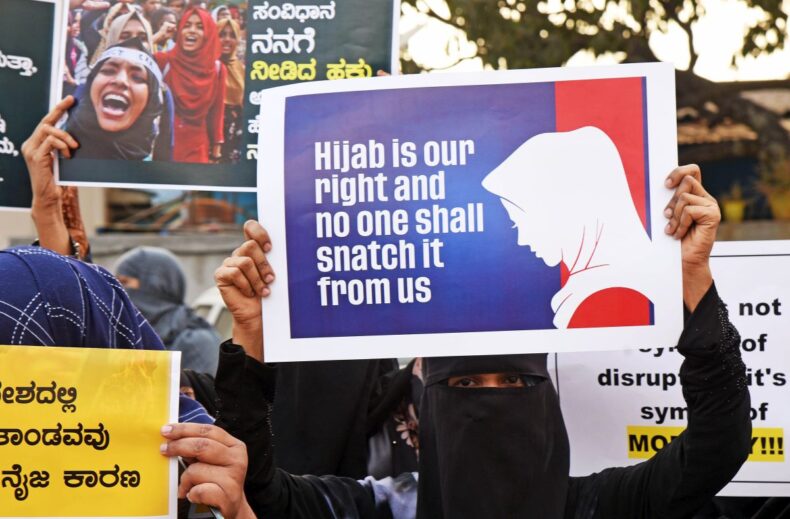A controversy developed in the Indian state of Karnataka in early January 2022, when Muslim students wearing hijab in a junior college were denied access to classrooms. The kids were permitted to enter the campus, but not inside the classrooms.
The conflict soon expanded to other universities across Karnataka, between Muslim students who wanted to wear hijab and administrators who said they couldn’t.
Early in February 2022, the debate heated up. Some students wearing saffron shawls joined the protests against Muslim women’s demand for the hijab.
Just a few months ago, where was the “hijab issue”? Why has it all of a sudden erupted? These are vital concerns that must be addressed since young men and women are being separated along religious lines, which is terrible and alarming. The altercation exemplifies the growing religious division in Karnataka after a group of girls began protesting.
The politicization and communalization of a uniform quarrel have blown it out of proportion. A dispute between educational institution managers and the community should not be converted into a mandir-masjid squabble.
The young ladies demonstrating in Karnataka claim that wearing the “hijab” is a personal decision and an essential part of their religious practice. That issue is also being debated in court, but at an educational institution, rules must be observed rather than personal preferences.
The hijab dispute is now in the hands of the Karnataka High Court, which is closely monitoring the situation since it is a source of worry. Students must attend school and university without wearing any religious symbols or wearing the headscarf/hijab, according to a High Court judgment of February 10, 2022.
The order is a violation of Article 25’s fundamental right to privacy. A challenge to the Karnataka High Court’s decision has also been lodged at the Supreme Court. A student submitted a petition seeking a stay on the high court’s directive, as well as the proceedings before the three-judge bench, which is considering the hijab case.
The appeal argued that the high court had attempted to limit Muslim student women’s fundamental right to wear the hijab by refusing them to do so.
The country is divided into two halves as a result of the hijab debate.
One side of the issue supports the idea that women should wear anything they choose.
While the other side argues that in a school or college, everyone should adhere to the fundamental rules of uniform, which include a code of behavior, and that religious identities should not be brought in.
The police performed a route march in Udupi on Friday in response to the Karnataka High Court’s interim decision prohibiting pupils from wearing hijab or saffron scarves in classrooms. In the meantime, the parents of six Muslim female students demonstrating for their right to wear hijab at a pre-university institution in Udupi have filed a police complaint alleging that their children’s personal information is being circulated on social media.
Now it’s up to the Supreme Court and high court to decide what happens next in this case. If they allow Muslim women to wear the hijab, or whether they follow the parameters outlined in the Indian Constitution and then issue an order based on that.
Edited by- Kritika
Published by- Radhika N












